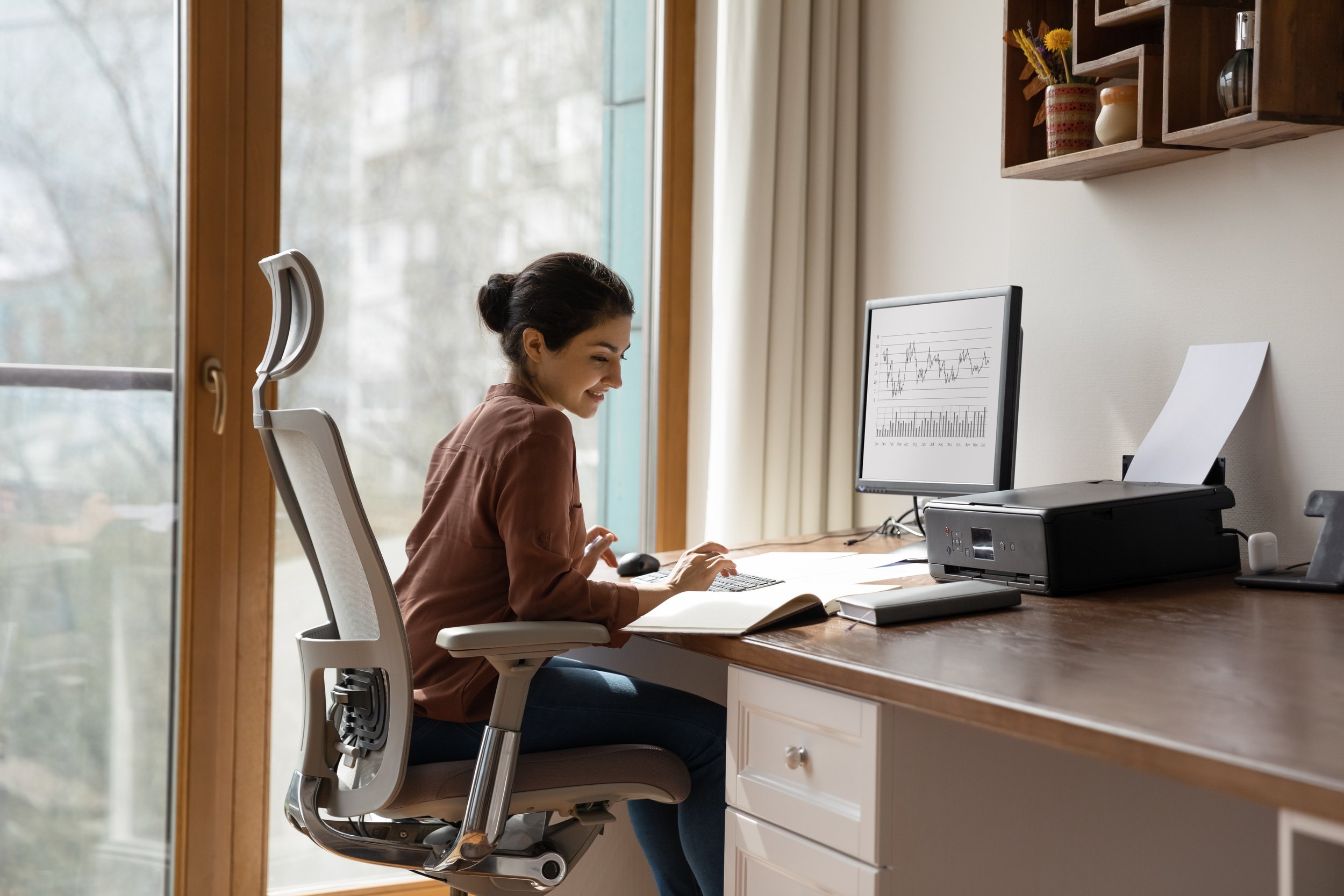A Guide to Achieving Work-Life Balance While Working Remotely
In August, we are celebrating National Wellness Month, prioritizing self-care, managing stress, and promoting healthy routines both personally and professionally. One way you can focus on wellness is by achieving and striving for a good work-life balance when working mainly from home. In the digital age, the lines between work and personal life can sometimes blur, especially for those who predominantly work from home. While remote work offers flexibility and convenience, it also brings its own set of challenges, such as maintaining a healthy work-life balance. The temptation to be always available and continuously work can often lead to burnout and reduced productivity. It can be a real challenge to find that sweet spot between work and chill time, but here are some tips for remote workers to help you find the right work-life balance.
Set Some Boundaries with your Home
Create a physical and mental separation between your workspace and personal living area. If you can, do not have your work and home space combined. Having a desk in your bedroom can lead you to always think about work because you see your home office space so often. In reverse, it can also be distracting because you might want to lie down on your bed and take a break, which is also steps from your desk. Designate a specific room or corner solely for work purposes. When you enter this space, you're in work mode, and when you leave it, you're in your personal time. Setting clear boundaries in your home helps you disconnect from work mentally and prevents it from encroaching on your personal life.
Establish a Schedule
Set fixed working hours that align with your natural productivity peaks and match your team's availability. Stick to this routine as closely as possible to maintain a structured workday. A lot of companies can be flexible and if you start working earlier in the day, you can often end a little earlier or take a couple more breaks throughout the day. Creating a predictable schedule ensures you can plan your personal activities and downtime without conflicting with your work responsibilities.
Prioritize Tasks
Create a to-do list each day and prioritize tasks based on their importance and urgency. Focus on completing high-priority tasks during your peak productivity hours. Maintaining clear communication when you might not be able to complete a task when expected is key. Adjusting is okay, but keeping others informed can minimize the thoughts that you need to work extra hours as well. By staying organized, you can reduce the chances of work spilling over into your personal time.
Take Regular Breaks
It's easy to get consumed in work and forget to take breaks. However, taking short breaks throughout the day can enhance productivity and help maintain your focus. Incorporating short walks, stretching, or meditation into your break routine can help refresh your mind and body and better prepare you for your work day.
Communicate with Family and Housemates
If you share your living space with family or housemates, communicate your work schedule to them clearly. Let them know when you need uninterrupted time and when you'll be available for chatting. Establishing open communication for your remote work day will help everyone respect each other's boundaries.
Dress the Part
Although working from home allows for casual attire, dressing up in comfortable, yet professional clothing can put you in a work mindset and boost productivity. The simple act of getting dressed can help draw a line between your work and home life.
Time Management is Key
Time management is key to achieving success and maintaining a balanced life. By utilizing techniques like time blocking and the two-minute rule, individuals can enhance productivity, minimize stress, and make better use of their time to accomplish both professional and personal goals effectively. These methods can help you maintain a balance between work and relaxation.
Change Up the Scenery
Allocate time for vacations and time off. Vacations provide an opportunity to recharge, rejuvenate, and reduce stress. Even if you can't travel far, dedicating time for rest and relaxation, whether it's a staycation or a short getaway, can have numerous benefits. It allows you to disconnect from work-related pressures, spend quality time with loved ones, pursue hobbies, and return to work with increased focus and productivity. Taking regular breaks promotes better mental health, prevents burnout, and enhances job satisfaction, making it a vital aspect of a fulfilling and sustainable remote work-life balance.
Maintaining a work-life balance while working primarily from home requires discipline, personal boundaries, and self-awareness. By implementing the strategies and tips, you can enhance productivity, reduce stress, and cultivate a more fulfilling lifestyle that harmoniously integrates work and personal life. Remember that achieving work-life balance is a continuous process, and it may require adjustments and experimentation to find what works best for you.

